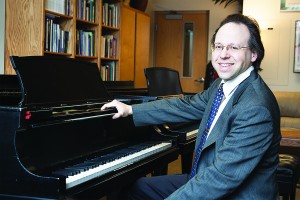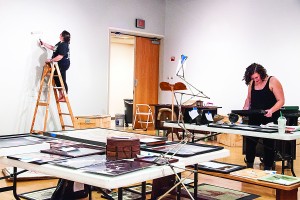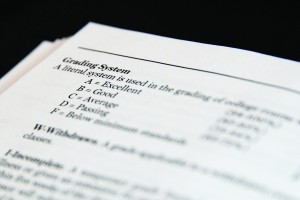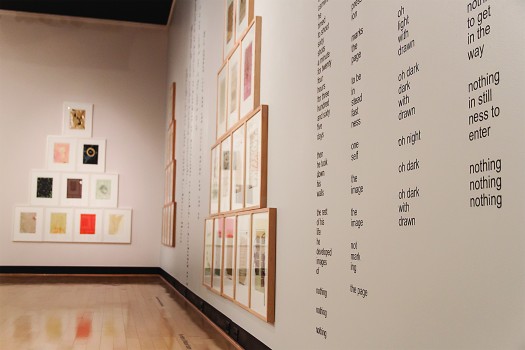William Newbrough, Houghton professor of piano, has recently been named as a Distinguished Steinway Artist by piano manufacturer Steinway & Sons. This recognition places him alongside many piano greats in Steinway’s collection, ranging from Rachmaninoff to Billy Joel, and many others.
 The process began when Newbrough was looking to buy a piano for personal use after having much experience with Steinway pianos in the studio and the practice room. He was able to strike up a relationship with the manager and owner of Denton, Cottier, & Daniels, a Steinway dealer located in Buffalo and Rochester, and the oldest one in the country and one that Houghton had established connection with in the past. Becoming a Distinguished Artist for Steinway requires a nomination from a dealership or individual with close connections to the company, a nomination that Newbrough received from the aforementioned manager.
The process began when Newbrough was looking to buy a piano for personal use after having much experience with Steinway pianos in the studio and the practice room. He was able to strike up a relationship with the manager and owner of Denton, Cottier, & Daniels, a Steinway dealer located in Buffalo and Rochester, and the oldest one in the country and one that Houghton had established connection with in the past. Becoming a Distinguished Artist for Steinway requires a nomination from a dealership or individual with close connections to the company, a nomination that Newbrough received from the aforementioned manager.
After this, Newbrough was invited to apply by for the recognition of being a Steinway artist. “I had never really thought about it so much for myself,” he comments. “The artists they have there are just, ones that I have admired for years and are of such stature in the piano world.” The application process was lengthy, concerning details such as educational pedigree, performance history and future engagements, and perhaps one of the most important, what pianist you have studied under. Dr. Newbrough was a student of Leon Fleisher, another Distinguished Steinway Artist. Newbrough was also required to list his professional recordings and DVDs, as well as provide a testimonial of his opinion on Steinway pianos to be published by the company. The recognition from Steinway is described as a partnership, representing a kind of brand loyalty for fine craftsmanship.
Following sending in his application, Newbrough did not hear anything for the company for eight months, but was contacted soon after a performance at Carnegie Hall. “I would not be surprised if they had a representative there just doing some final verifications,” he says. Newbrough is most excited about the potential doors that the honor affords for both the music department, and Houghton College as a whole, citing the benefits of being connected to a good dealership. “I’m hoping this will potentially … manifest in an opportunity to be an all-Steinway school.” Newbrough also mentioned Steinway’s relationships with other individuals in the music world, hoping to make further connections for future Houghton performances, as well as the visibility that having a Distinguished Steinway Artist at an institution provides. “I would hope that it would be a tremendous draw for students in terms of student recruitment.”
The honor is just another to add to Newbrough’s extensive list of accomplishments, both nationally and globally, but the artist remains humble, looking upward. “Whatever honors are bestowed on me, I direct them heavenwards,” he says, adding that this particular recognition is just one more opportunity to reveal the glory of God. “For me, I never see a recognition as an end in itself … through my performance career, I’m always looking at what are these kinds of things that can open doors for ministry.”





